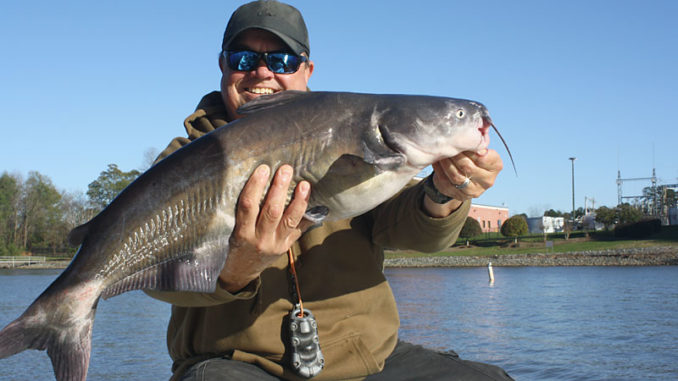
Catfishing on Mt. Island Lake
Dieter Melhorn considers diminutive Mountain Island Lake on the Catawba River as his favorite winter hole for blue cats.
At only 3,281 acres, the lake’s size enables fishermen to locate treasured catfish structures without sophisticated side-scan units and without motoring long distances in the cold.
“Not many fishermen want to run around a lake the size of Lake Norman in bone-chilling weather, even if it has bigger cats,” said Melhorn (www.dietermelhornfishing.com).
Besides, Mountain Island is no slouch for an occasional trophy blue. In 2015, a Charlotte angler hoisted a 70.83-pound blue from the lake.
Melhorn likes to fish Mountain Island when waters are released from Cowans Ford Dam creating a steady current.
“For every inch that Norman is lowered, Mountain Island rises one foot, creating an almost riverine fishery that is driven by current and water flow,” said Melhorn. “This can be a good thing if you are there when water is released from Cowans Ford Dam. But if water is moving through the lake for several days, it can make fishing tough.”
Start early
Melhorn arrives at the lake early because that’s the time the water is released.
During the morning hours, he targets mid-lake rock outcroppings, ledges and points where blues seek refuge from the current.
“Fishing rocky places is a productive method of catching blues when there is a constant flow of water through the lake,” said Melhorn.
Melhorn’s favorite baits include white perch and spotted bass. He slices them into fillets and then chunks. The heads are reserved to attract huge cats.
Melhorn utilizes stout gear. He employs medium/heavy Big Cat Fever casting rods holding Ambassadeur 5000 and 6000 reels spooled with 30-pound Ande Monster monofilament in conjunction with a Santee rig for anchor fishing or drifting.
Slow-trolling is an option when no current is running.
“Speed is critical; you can’t go too slow, but you can go too fast. I go 0.6 mph or slower,” he said.




Be the first to comment